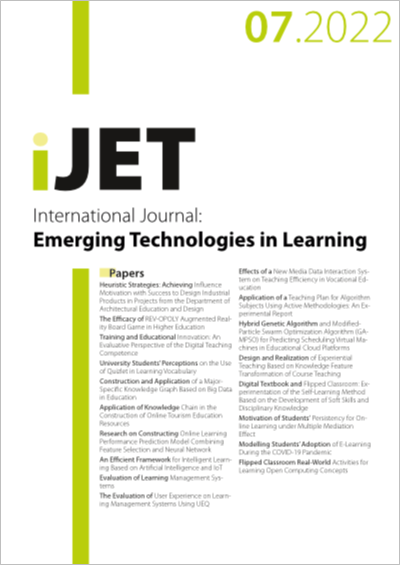Construction and Application of a Major-Specific Knowledge Graph Based on Big Data in Education
DOI:
https://doi.org/10.3991/ijet.v17i07.30405Keywords:
major-specific knowledge, knowledge graph, node importance, node featuresAbstract
The main problems lying in the learning process of learners in different majors are that they study blindly and do not have a complex knowledge structure, which are seriously affecting their learning effects. But if a knowledge graph can be modeled for the major-specific curriculum system using the quantitative method from the perspective of knowledge network, it may be able to improve the existing teaching problems and optimize the teaching quality. The existing major-specific knowledge graphs were all constructed in an abstract form, ignoring the inherent prior learning relationship between teaching units and curriculum knowledge. To this end, taking English major as an example, this paper studied the construction and application of a major-specific knowledge graph based on the big data in education. Firstly, the English major-specific knowledge graph was modeled, the calculation process of node importance was shown, and a localized graph of the knowledge network of English major courses was given. Then, a multi-node feature selection framework for the English major-specific knowledge graph was constructed based on the context of nodes, and the importance of the top k nodes in the constructed knowledge graph was extracted using the multi-node feature extraction technology. After that, the experimental results verified the stability and connectivity of the nodes in the constructed knowledge graph.
Downloads
Published
How to Cite
Issue
Section
License
Copyright (c) 2022 Nan Zhang (Submitter); Zhihao Wu, Fang Jia

This work is licensed under a Creative Commons Attribution 4.0 International License.



